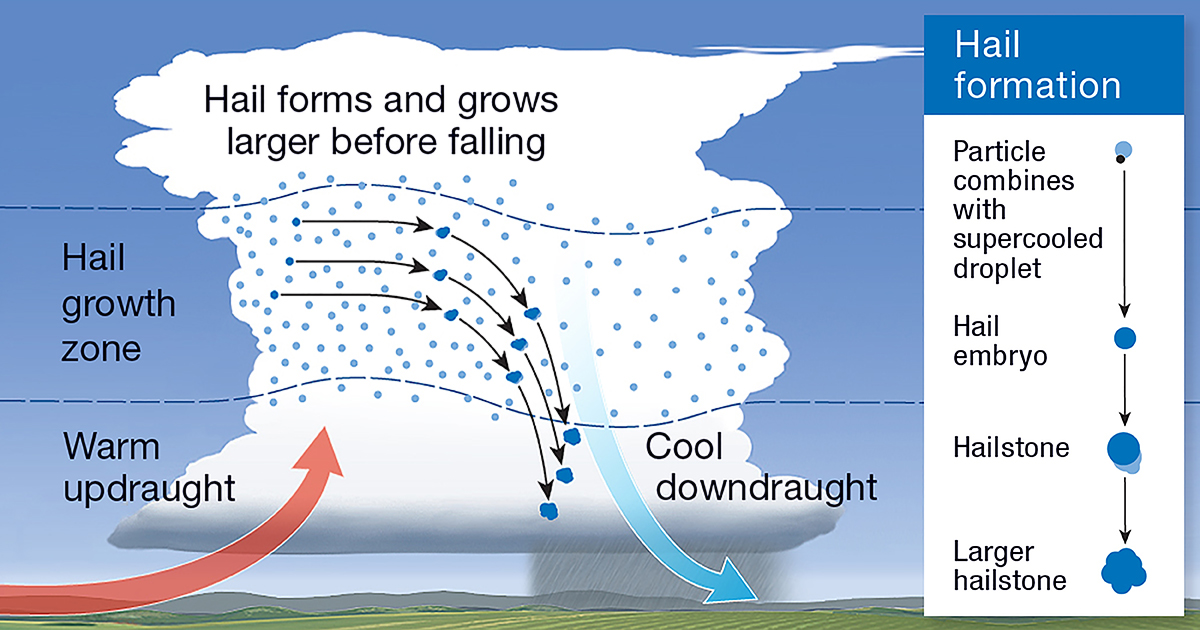As Australia heads into hail season, the atmosphere is already showing signs of ramping up. Hail events can cause millions of dollars in damage to homes, vehicles, and infrastructure, and they form under a surprisingly precise set of conditions.
At EWN, our operations staff live and breathe these storms. They track hail cells in real time, verify hail sizes from the field, and feed that information back into systems like HailAWARE so insurers, businesses, and communities can respond faster.
Here’s a closer look at how hailstorms develop, how hailstones form, and why data collection is critical to understanding and mitigating their impacts.
What Conditions Are Needed for a Hailstorm?
While hail can occur in many parts of the world, Australia’s east coast and inland regions are particularly prone to damaging hailstorms. The right combination of ingredients includes:
Strong Updrafts:
Hail forms in powerful thunderstorms where strong upward currents of air can suspend ice particles high in the cloud. The stronger the updraft, the larger the hailstone can grow before gravity pulls it down.
Moist, Unstable Air:
Warm, moist air near the surface fuels the towering cumulonimbus clouds where hail develops.
Cold Temperatures Aloft:
The upper levels of the storm cloud must be below freezing so that supercooled water droplets can freeze onto hail embryos.
Wind Shear:
Changes in wind speed and direction with height help tilt the storm, separating updrafts from downdrafts. This allows hailstones to stay aloft longer and grow larger.
When all these factors align, hailstorms can produce stones the size of golf balls, cricket balls, or even larger, capable of smashing windows, denting vehicles, and damaging solar panels.
How Do Hailstones Form?

Image of how a hail stone forms (Image via BoM)
The process is like layering an onion:
The Seed (Hail Embryo):
A small ice particle, often a frozen raindrop or graupel pellet, forms high in the cloud.
Growth Through Cycling:
Strong updrafts lift the embryo into areas of the cloud with supercooled water droplets. These droplets freeze instantly on contact, adding a new layer of ice.
Multiple Journeys:
The hailstone may be thrown up and down inside the storm several times, each pass adding more layers.
The Fall:
When the hailstone becomes too heavy for the updraft to support, it falls to the ground, often accelerated by downdrafts in the storm.
If you cut a hailstone in half, you’d see these concentric ice layers — a record of its journey through the storm.
 A hailstone cut in half, which reveals layers of clear and cloudy ice formed as the hailstone journeyed through different parts of a thunderstorm cloud. ERZ via Wikimedia Commons, CC BY
A hailstone cut in half, which reveals layers of clear and cloudy ice formed as the hailstone journeyed through different parts of a thunderstorm cloud. ERZ via Wikimedia Commons, CC BY
Why Data Collection Matters
Our operations team at EWN is passionate about tracking hail in detail, from our meteorologists’ forecasting work and observations on the ground. Every hail report we create adds to a growing dataset that:
-
Validates forecasts
-
Improves understanding of hail patterns in different regions
-
Supports post-event analysis for insurers, infrastructure managers, and emergency services
This field data, combined with radar, satellite, and model information, feeds into our tools like HailAWARE, giving stakeholders a precise picture of hailstorm impacts.
While hail might seem like an unpredictable force of nature, the science behind it is well understood. By knowing the conditions that lead to hail, and collecting accurate data on where and when it occurs, we can reduce risk, improve resilience, and help communities recover faster.